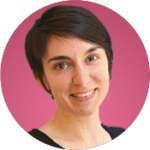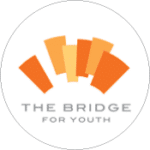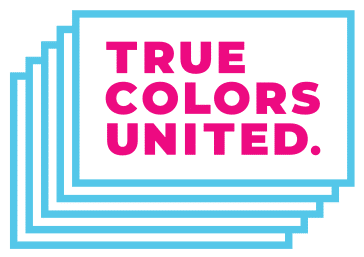Kristan Clow is the Youth and Community Outreach Manager at The Bridge for Youth, a Minneapolis-based organization that serves youth experiencing homelessness. Emily Dunn, our Program Associate, spoke with Kristan about the work The Bridge is doing for youth in Minnesota.
 Tell me a little bit about The Bridge for Youth.
Tell me a little bit about The Bridge for Youth.
 We are a homeless youth shelter and we serve 10-17 year olds. The way that we work with young people is very different. We’re doing family reunification work – working with kids to find families. We’re seeing parents who want to understand, want to be involved, and want a safe place for their kids to go.
We are a homeless youth shelter and we serve 10-17 year olds. The way that we work with young people is very different. We’re doing family reunification work – working with kids to find families. We’re seeing parents who want to understand, want to be involved, and want a safe place for their kids to go.
 What types of services do you offer at Bridge for Youth?
What types of services do you offer at Bridge for Youth?
 We have a 24-hour crisis call center. This is where we see the most kids. Additionally, we have a 24/7, 365 shelter with two beds designated for trans-identified youth. We offer counseling services (which are completely free) for youth. However, in Minnesota there are very few people trained to do therapy for folks in transition or family therapy.
We have a 24-hour crisis call center. This is where we see the most kids. Additionally, we have a 24/7, 365 shelter with two beds designated for trans-identified youth. We offer counseling services (which are completely free) for youth. However, in Minnesota there are very few people trained to do therapy for folks in transition or family therapy.
 How do you describe your work with lesbian, gay, bisexual, transgender, and queer/questioning (LGBTQ) youth who have experiences with homelessness?
How do you describe your work with lesbian, gay, bisexual, transgender, and queer/questioning (LGBTQ) youth who have experiences with homelessness?
 We are progressive around lesbian, gay, bisexual, transgender, and queer rights, but are not an LGBTQ-specific organization. When a young person comes out and get kicked out of their house, their option is not to get their own apartment, but rather to have adults around to help them with next steps. Last year, we saw just shy of 1000 kids. Statewide, we are seeing well over half of the young people (10-17) who are reported as homeless in Minnesota. If a kid is homeless and has experienced homelessness in this state, they have most-likely gone through our program.
We are progressive around lesbian, gay, bisexual, transgender, and queer rights, but are not an LGBTQ-specific organization. When a young person comes out and get kicked out of their house, their option is not to get their own apartment, but rather to have adults around to help them with next steps. Last year, we saw just shy of 1000 kids. Statewide, we are seeing well over half of the young people (10-17) who are reported as homeless in Minnesota. If a kid is homeless and has experienced homelessness in this state, they have most-likely gone through our program.
 So, what’s the history of LGBTQ work at Bridge for Youth?
So, what’s the history of LGBTQ work at Bridge for Youth?
 The LGBTQ support group, “So What if I Am,” started in the 90’s when queer folks were running away and coming to Twin Cities for support and services. My position as Youth and Community Outreach Manager was created in 2012 to find queer kids seeking support and services. I did targeted outreach to middle and high schools, as well as to local community organizations. The Arise project through United Way has provided the funding to do this LGBTQ-work. How can non-LGBTQ-specific organizations be seen as one? How do we get visibility? By hiring trainers and creating an inclusive and affirming environment among staff. We’re in the midst of trying to put together an advisory panel, so that if funding disappears, these folks can advise the board about trends, needs, and deficits in the LGBTQ community in Minneapolis.
The LGBTQ support group, “So What if I Am,” started in the 90’s when queer folks were running away and coming to Twin Cities for support and services. My position as Youth and Community Outreach Manager was created in 2012 to find queer kids seeking support and services. I did targeted outreach to middle and high schools, as well as to local community organizations. The Arise project through United Way has provided the funding to do this LGBTQ-work. How can non-LGBTQ-specific organizations be seen as one? How do we get visibility? By hiring trainers and creating an inclusive and affirming environment among staff. We’re in the midst of trying to put together an advisory panel, so that if funding disappears, these folks can advise the board about trends, needs, and deficits in the LGBTQ community in Minneapolis.
 Can you tell me a little more about “So What if I Am?”
Can you tell me a little more about “So What if I Am?”
 Our Tuesday night group, “So What if I Am,” helps youth meet each other and build community. For once, they don’t need to feel alone and don’t need to teach people what it’s like to be queer. They can be themselves. Lots of kids in the group have PTSD, anxiety, or have attempted suicide or self-harm, but the group creates this environment where the world gets a little big bigger… where you are not by yourself.
Our Tuesday night group, “So What if I Am,” helps youth meet each other and build community. For once, they don’t need to feel alone and don’t need to teach people what it’s like to be queer. They can be themselves. Lots of kids in the group have PTSD, anxiety, or have attempted suicide or self-harm, but the group creates this environment where the world gets a little big bigger… where you are not by yourself.
